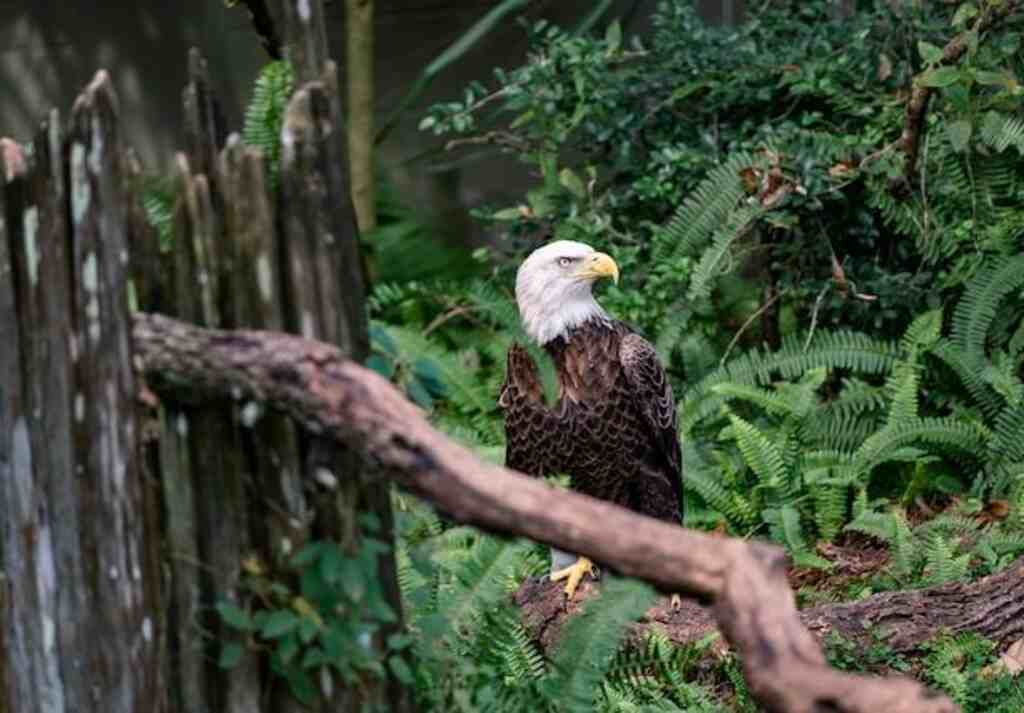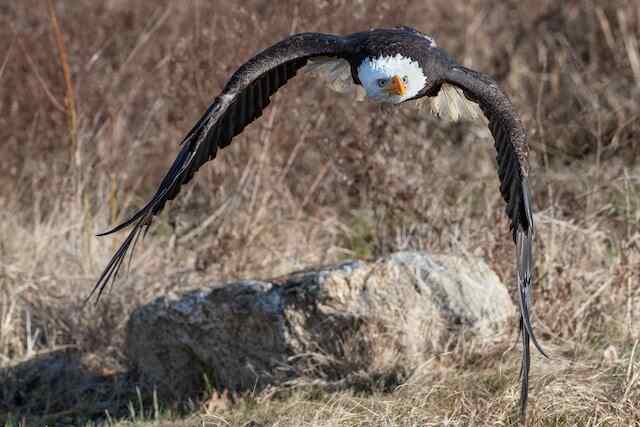Get ready for an extraordinary exploration of the natural world’s greatest enigma. Do Eagles Eat Wolves?
In the vast realm of nature’s food chain, where predator and prey engage in a perpetual dance of life and death, this question sparks curiosity and imagination.
Join us as we delve into the scientific depths, dispel misconceptions, and uncover the surprising dynamics between these majestic birds of prey and the formidable wolves.
Prepare to witness a wild symphony of nature’s delicate balance and indulge in the untamed realm where freedom reigns supreme.
Let’s embark on this thrilling journey together!
Table of Contents
- 1 Key Takeaways:
- 2 The Role of Eagles in the Food Chain
- 3 The Hunting Techniques of Eagles
- 4 The Size and Strength of Wolves
- 5 Do Eagles Eat Wolves
- 6 Instances of Eagles Preying on Wolves
- 7 The Challenges of Taking Down a Wolf
- 8 The Diet of Eagles
- 9 Other Prey Preferences of Eagles
- 10 Interactions Between Eagles and Wolves in the Wild
- 11 Misconceptions About Eagles Eating Wolves
- 12 Frequently Asked Questions
- 12.1 Do eagles primarily hunt in packs like wolves?
- 12.2 How do wolves defend themselves against eagle attacks?
- 12.3 Are there any recorded instances of eagles hunting and killing adult wolves?
- 12.4 What percentage of an eagle’s diet consists of wolves?
- 12.5 Do wolves pose a threat to eagle populations in any way?
- 13 Conclusion
- 14 Author
Key Takeaways:
- Eagles do not eat wolves. Their diet mainly consists of fish, small mammals, birds, and carrion.
- Wolves are larger and more powerful than eagles, making them unlikely prey.
- Eagles and wolves inhabit different ecosystems and have different hunting strategies, resulting in minimal interaction between the two species.
- Understanding the natural dynamics of predator-prey relationships enhances our appreciation for the delicate balance in the animal kingdom.

The Role of Eagles in the Food Chain
Eagles play a crucial role in the food chain as apex predators, contributing to the regulation of ecosystems through their predatory behavior.
As top predators, they have a significant impact on prey populations, controlling their numbers and maintaining the balance within an ecosystem.
By hunting and consuming a variety of prey species, eagles help control the population sizes of their prey, preventing overpopulation and subsequent negative impacts on vegetation and other wildlife.
The role of eagles in the ecosystem extends beyond their direct impact on prey populations.
Through their predatory behavior, eagles also help to weed out weak and sick individuals, thereby promoting the overall health and genetic diversity of prey species.
Understanding the role of eagles in the food chain is essential for comprehending the intricate dynamics of ecosystems. Transitioning into the next section, it is crucial to explore the hunting techniques of eagles.
The Hunting Techniques of Eagles
Raptors, such as eagles, employ a variety of hunting techniques to capture their prey, showcasing their impressive skills and adaptability in the wild.
Eagle hunting behavior is characterized by their keen eyesight, powerful talons, and strong beaks.
Eagles are known for their ability to spot their prey from great distances, using their sharp vision to locate potential targets.
Once an eagle has identified its prey, it will dive from the sky at incredible speeds, using its strong wings and sharp talons to snatch its prey out of the air or from the ground.
Eagles also exhibit cooperative hunting behavior, where they work together to bring down larger prey.
These predatory skills enable eagles to successfully capture a wide range of prey, including small mammals, fish, and birds.
Transitioning to the subsequent section about the size and strength of wolves, eagles’ hunting techniques are particularly remarkable when considering the formidable opponents they may encounter.
The Size and Strength of Wolves
One interesting statistic regarding the size and strength of wolves is that adult males can weigh up to 175 pounds, making them one of the largest canid species in the world.
Wolves possess a robust and muscular build, allowing them to take down prey larger than themselves.
Their size is advantageous during hunting, as it enables them to overpower and bring down ungulates such as elk and moose.
Additionally, their powerful jaws and sharp teeth aid in capturing and subduing their prey.
Wolves are known for their cooperative hunting strategies, relying on pack coordination and teamwork to increase their chances of success.
They employ tactics such as surrounding and isolating their target, using their speed and endurance to tire out their prey.
These hunting techniques have evolved over time, allowing wolves to effectively survive and thrive in various environments.
Transitioning into the subsequent section, instances of eagles preying on wolves highlight the interplay between these two remarkable predators.
Do Eagles Eat Wolves
No, eagles do not eat wolves. Eagles primarily feed on fish, small mammals, birds, and carrion. Wolves are much larger and more powerful than eagles, making them unlikely prey.
Eagles and wolves typically inhabit different ecosystems and have distinct hunting strategies, resulting in minimal interaction between the two species.

Instances of Eagles Preying on Wolves
Instances of eagles preying on wolves underscore the intricate dynamics between these apex predators, shedding light on the complex interactions within ecosystems.
While wolves are known for their strength and pack hunting abilities, eagles exhibit remarkable aerial skills and opportunistic feeding behavior.
Eagles are known to target young or injured wolves, taking advantage of their vulnerability.
They use their sharp talons and powerful beaks to immobilize and kill the wolves, often targeting the head or throat region.
This behavior highlights the predator-prey dynamics within ecosystems, where even top predators can fall prey to other powerful species.
Understanding these interactions is crucial for comprehending the delicate balance maintained within ecosystems.
Transitioning into the subsequent section about the challenges of taking down a wolf, it is important to consider the formidable defenses that wolves possess.
The Challenges of Taking Down a Wolf
The formidable defenses and adaptability of wolves present significant challenges when attempting to bring down these apex predators.
Wolves possess a range of natural defenses that make them difficult prey for eagles.
Their powerful jaws and sharp teeth can inflict serious injuries, while their muscular build and agility enable them to evade attacks.
Additionally, wolves often live and hunt in packs, providing them with an added layer of protection.
In contrast, eagles rely on their hunting strategy to overcome these challenges. They possess excellent eyesight, allowing them to spot potential prey from great distances.
Eagles use their speed and agility to launch surprise attacks, targeting vulnerable areas such as the wolf’s neck or hind legs.
By understanding the wolf’s natural defenses and using their own hunting strategy, eagles are able to successfully prey on these formidable predators.
Transitioning into the subsequent section about the diet of eagles, their ability to bring down wolves provides them with a significant source of sustenance.
The Diet of Eagles
In order to understand the diet of eagles, it is crucial to analyze their hunting techniques and prey preferences.
Eagles are renowned for their impressive hunting skills, which enable them to capture a wide range of prey.
These adept predators primarily rely on their keen eyesight, powerful talons, and soaring abilities to secure their meals.
While eagles are opportunistic hunters and have been known to attack various animals, their preferred prey consists mainly of small to medium-sized mammals, such as rabbits, squirrels, and rodents.
Additionally, eagles have been observed hunting and feeding on fish, birds, and reptiles. Their diverse diet showcases their adaptability and ability to exploit different food sources.
With this understanding of the eagle’s hunting techniques and prey preferences, we can now explore their other prey preferences in the subsequent section.

Other Prey Preferences of Eagles
An additional prey preference of eagles includes reptiles, such as snakes and lizards.
For example, a study conducted in a forested area found that eagles frequently targeted snake species that were abundant in the region, utilizing their sharp beaks and strong talons to capture and consume them.
This demonstrates the diverse diet of eagles and their ability to adapt to different prey sources.
The hunting techniques employed by eagles to capture reptiles involve swooping down from the sky with great speed and precision, using their keen eyesight to locate their prey from high above.
Once the eagle has secured its target, it will use its powerful talons to grasp and immobilize the reptile, before tearing it apart with its sharp beak.
This remarkable display of hunting prowess showcases the remarkable adaptability and skill of eagles in their pursuit of prey.
Transition: With a thorough understanding of the prey preferences and hunting techniques of eagles, we can now delve into the intriguing interactions between eagles and wolves in the wild.
Interactions Between Eagles and Wolves in the Wild
Interactions between eagles and wolves in the wild reveal a complex dynamic between two top predators. While wolves are known for their hunting prowess, eagles also play a significant role in the ecosystem as skilled hunters.
Instances of eagles preying on wolves have been documented, although they are relatively rare. These interactions typically occur when eagles target wolf pups or injured or weakened adult wolves.
Eagles are opportunistic predators, and they take advantage of vulnerable individuals within the wolf pack.
However, it is important to note that eagles do not pose a significant threat to healthy adult wolves.
Instead, their interactions serve as a reminder of the intricate relationships within ecosystems and the diverse strategies employed by different species.
Transitioning into the subsequent section about ‘misconceptions about eagles eating wolves,’ it is essential to explore the reasons behind these rare instances.
Misconceptions About Eagles Eating Wolves
Contrary to popular belief, the dietary habits of eagles and their potential involvement with wolves have been subject to misconceptions, akin to a mirage in the desert.
While it is true that eagles are opportunistic predators, their interactions with wolves in the wild are limited and do not involve predation.
Eagles primarily prey on small to medium-sized mammals, fish, and birds, and they rarely target large predators like wolves.
Although there have been anecdotal reports of eagles scavenging carcasses of wolves, there is no evidence to suggest that eagles actively hunt or kill wolves.
Instead, their relationship is more likely one of coexistence, with eagles utilizing the landscape and resources in different ways than wolves.
Further research is needed to fully understand the dynamics of the eagle-wolf relationship and the extent of their interactions in the wild.

Frequently Asked Questions
Do eagles primarily hunt in packs like wolves?
Eagles do not primarily hunt in packs like wolves. While both species are predators, eagles have different hunting strategies. Eagles rely on their powerful wings to soar and spot prey from above, while wolves use teamwork and coordination to hunt in packs.
How do wolves defend themselves against eagle attacks?
Wolves employ various survival tactics to defend against eagle attacks in the battle in the skies. They rely on their agility, speed, and teamwork to evade and intimidate the aerial predators.
Are there any recorded instances of eagles hunting and killing adult wolves?
There have been no recorded instances of eagles hunting and killing adult wolves. However, eagle hunting methods include aerial attacks and targeting smaller prey such as rabbits and fish. Eagle-wolf interactions are typically limited to territorial disputes.
What percentage of an eagle’s diet consists of wolves?
Eagles do not include wolves in their diet. Their hunting behavior and dietary preferences focus on smaller prey such as fish, rodents, and birds. Eagles seldom target large mammals like wolves due to their size and defensive capabilities.
Do wolves pose a threat to eagle populations in any way?
Interactions between eagles and wolves in different ecosystems have been studied to understand the impact of wolf populations on eagle nesting success. These studies have shown that wolves can pose a threat to eagle populations by disturbing their nesting behavior and potentially preying on their young.

Conclusion
In conclusion, the notion that eagles feed on wolves is largely a misconception. While eagles are formidable hunters, their preferred prey consists mainly of smaller animals such as rodents, fish, and birds.
The size and strength of wolves make them a challenging target for eagles, and instances of eagles preying on wolves are extremely rare.
Eagles play a crucial role in the food chain, but their interactions with wolves in the wild are more likely to be limited to territorial disputes rather than predatory encounters.



